I have 9 thermistors arranged in a grid, and I want to average the readings from these thermistors without code (that is, average them in a circuit rather than reading all the values into a microcontroller and averaging within code) - for speed. The 'readings' are voltages measured via ADC on an Arduino in a typical thermistor set up with the ADC line straight after the first resistor but right before the thermistor, such as shown below.
I was originally intending to use a voltage averaging circuit based on Millman's theorem- until I suddenly realised that this won't work because no current flows from the thermistor circuit to the ADC.
Does anyone know of a way to wire up 9 thermistors such that the readings I can obtain is the average of the 9, or if there's a version of a voltage averaging circuit that works on open loops?
Edit with more info:
Thermistors are equispaced in a 3x3 grid with a 150mm pitch. Ranging from 40 degrees Celsius to -40 degrees Celsius. All resistors should be very close to each other, they all measure the same thing, but 9 is used instead of one to account for uneven temperature distributions. The change in temperature should be gradual but I'm limited by the Arduino's built in analogueRead function which is about 0.001 second sample time.
